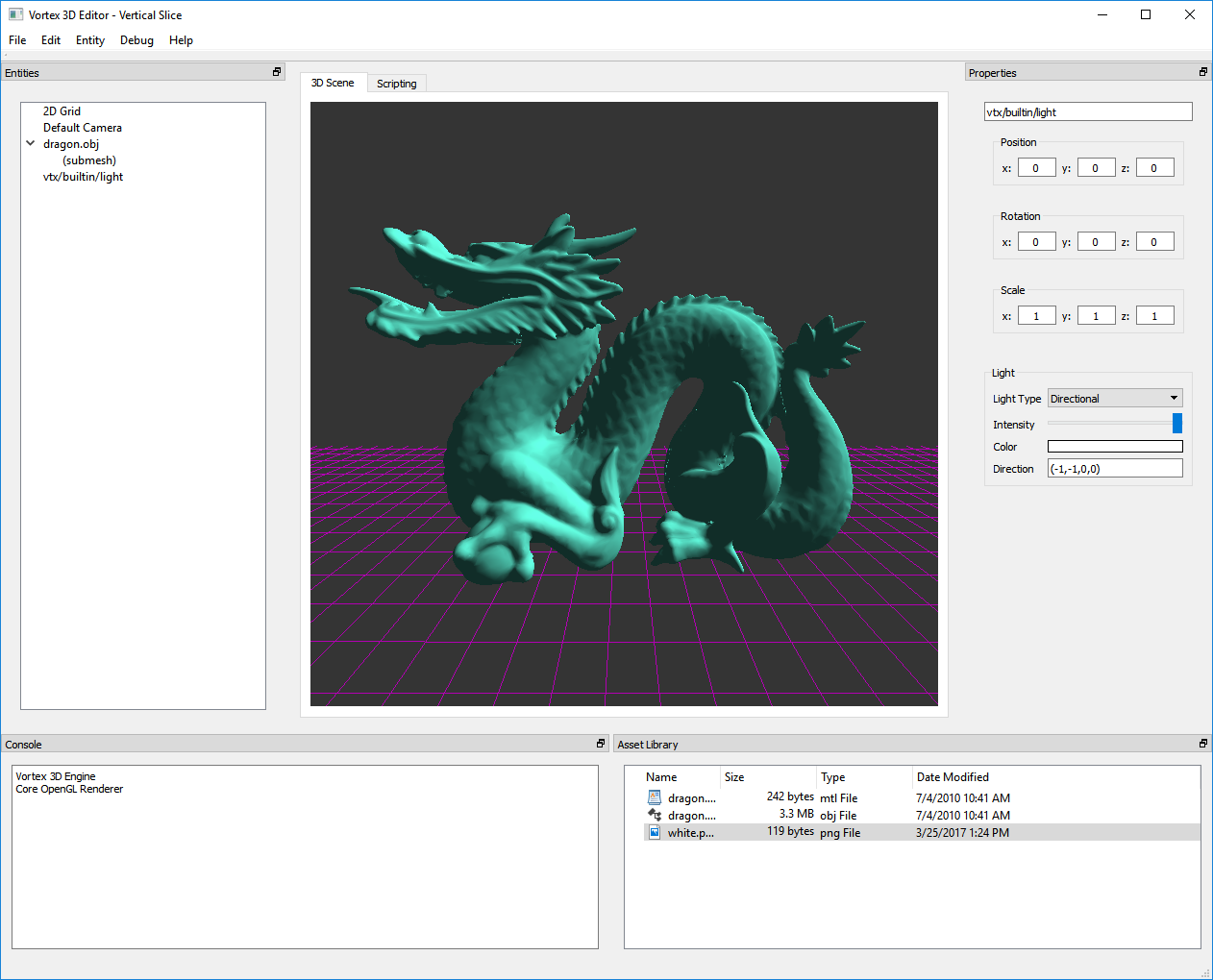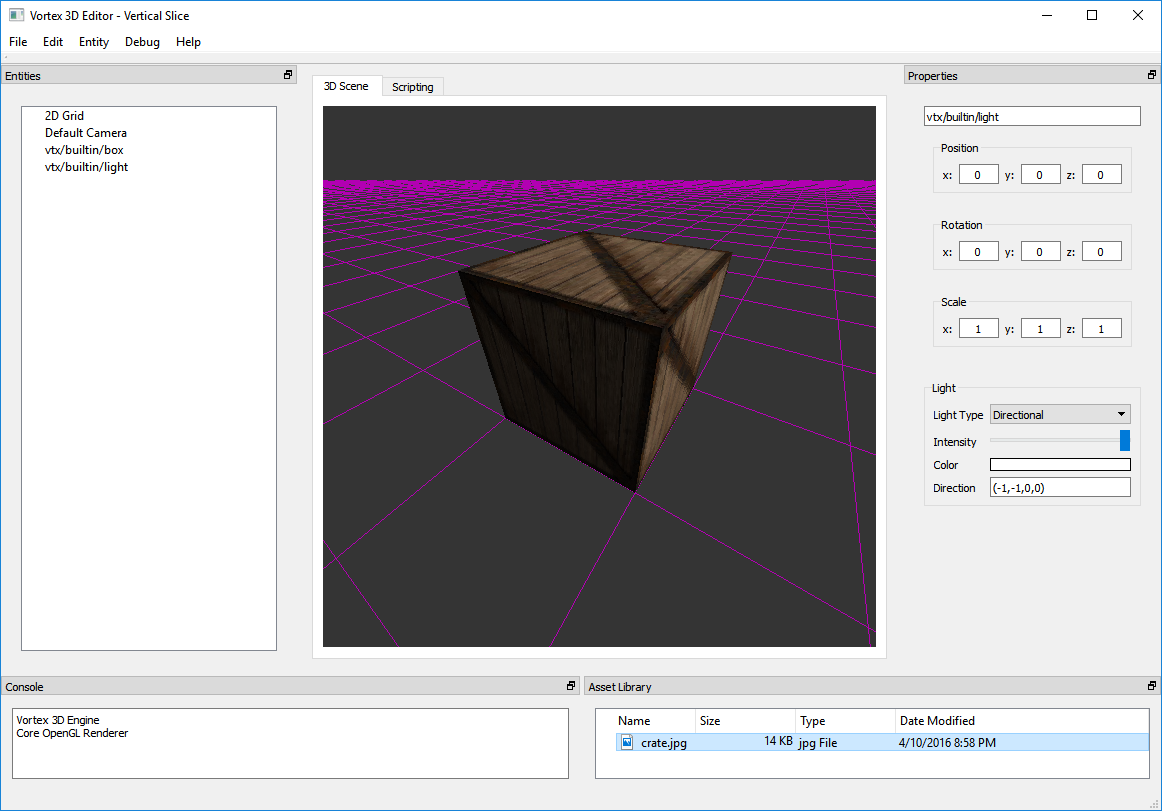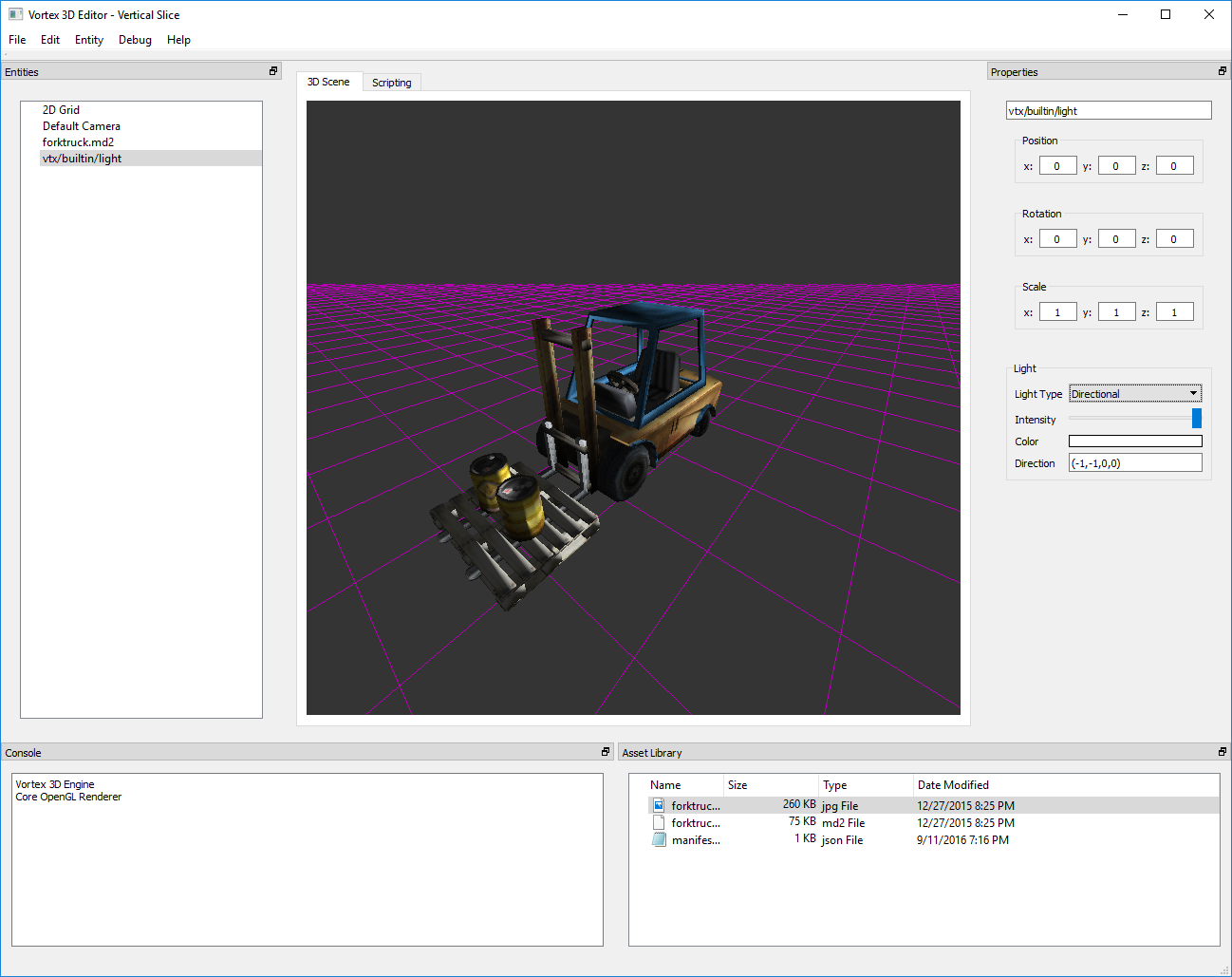Deferred Rendering – Part II: Handling Normals
This week work went into adding normal data to the G-Buffer and Light passes. I left normal data out while I was still implementing the architecture for the deferred renderer, so in the previous post we were only doing ambient lighting.

Adding normal data required a few tweaks to several components of the renderer.
First, I had to extend my Vertex Buffers to accommodate an extra 3 floating point values (the normal data). If you’ve been following these post series, you’ll remember from this post that we designed our Interleaved Arrays with the format XYZUVRGBA. I’ve now expanded this format to include per-vertex normals. The new packing is: XYZNNNUVRGBA, where NNN denotes the normal x, y and z values.
Next, the G-Buffer had to be extended to include a third render target: a normal texture. Here is where we stored interpolated normal data calculated during the Geometry pass.
Finally, we extend the Light pass shader to take in the normal texture and sample the per-fragment world-space normal and use it in its light calculation.

For testing, I used our usual textured box model and directional light with a rotating direction, as depicted above. The box is great for these kinds of tests, as its faces are parallel to the Ox, Oy and Oz planes with opposite value normals.
Soon enough, the test revealed a problem: faces with negative normals where not being lit. Drawing the normal data to the framebuffer during the light pass helped narrow down the problem tremendously. It turns out, normal data sampled from the normal texture was clamped to the [0-1] range. This meant that we could not represent normals with negative components.
Going through the OpenGL documentation for floating point textures revealed the problem. According to the docs, if the data type of a texture ends up being defined as fixed-point, sampled data will be clamped. The problem was caused by a single incorrect parameter in the glTexture2D calls used to create the render textures: the data type was being set to GL_UNSIGNED_BYTE for floating point textures.
The fix was simple enough: set the data type as GL_FLOAT for floating point textures, even if the internal format is already floating-point.

With this fix in place, I could confirm that we are able to light a surface from any direction from our simple Light pass. The image above shows our old warehouse scene loaded by Editor, and the forktruck is being lit by the deferred renderer!
There are now several paths where work can continue: we can extend our serialization format to include material data, we can continue improving the visuals or we can start testing our code on Mac. Stay tuned for more!